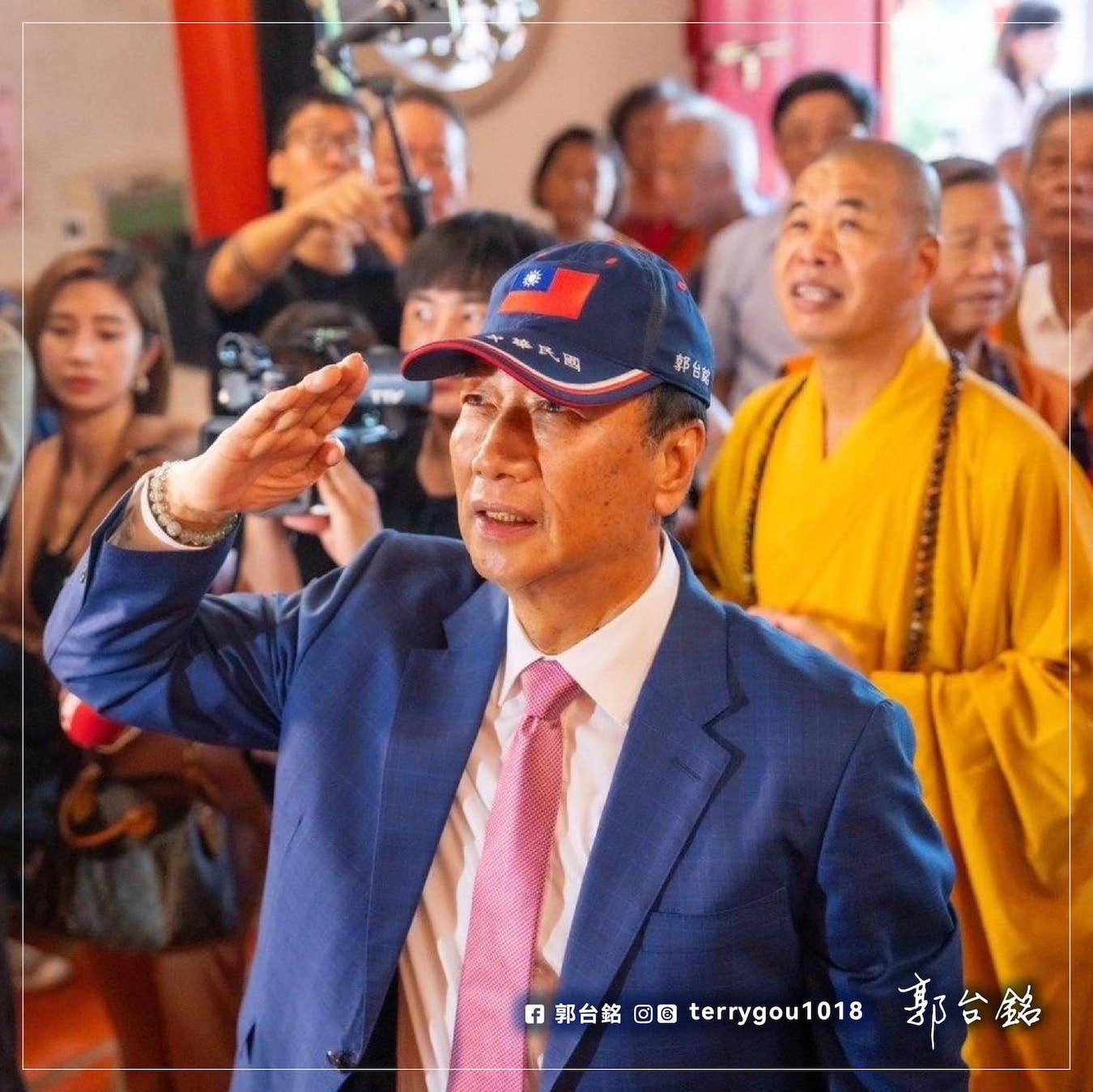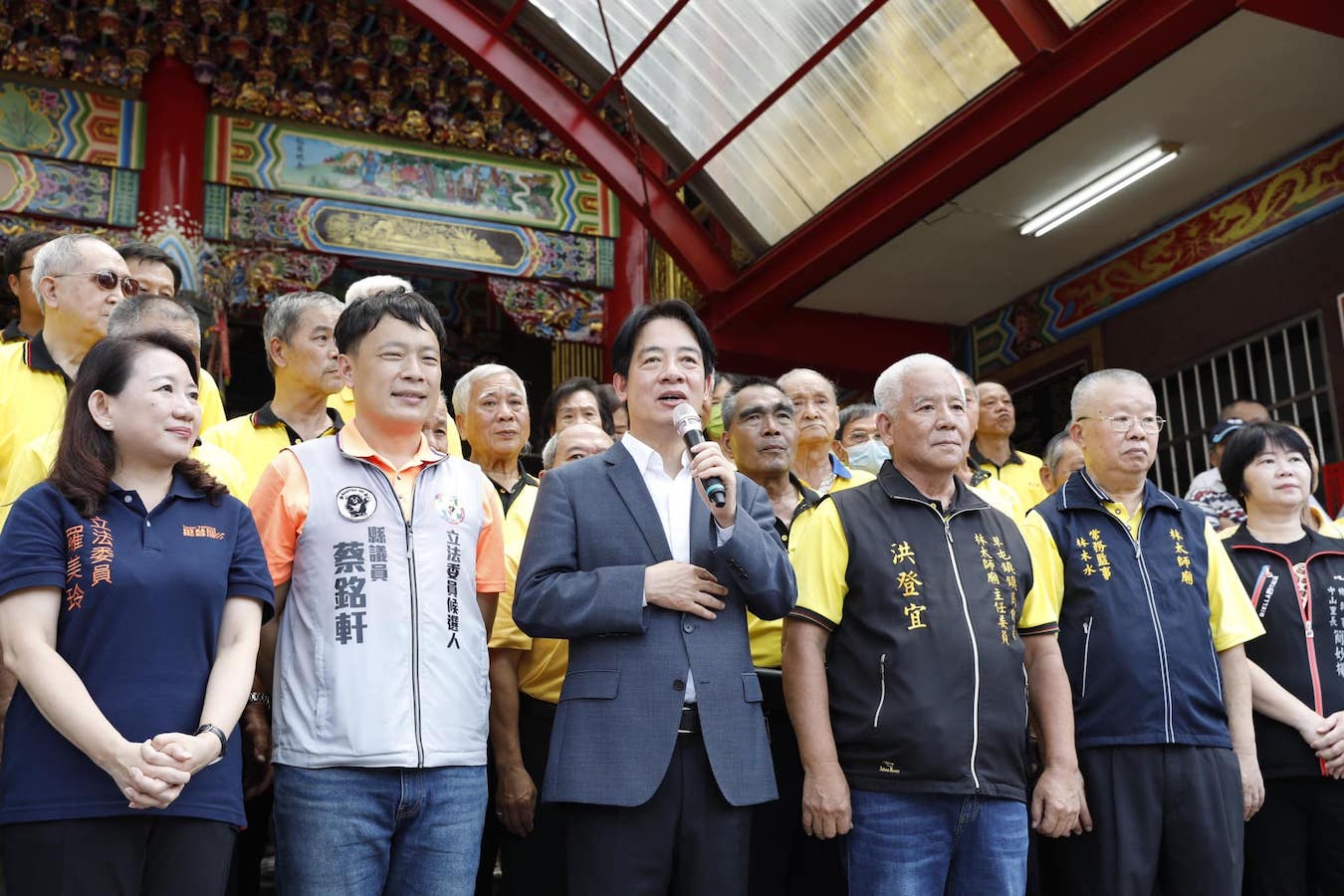by Brian Hioe
語言:
English
Photo Credit: Terry Gou/Facebook
DPP PRESIDENTIAL CANDIDATE William Lai hit out at Terry Gou’s proposal of a peace treaty between Taiwan and China earlier this week. Gou is running for president as a pan-Blue independent, with the KMT having declined to nominate him in favor of New Taipei mayor Hou You-yi earlier this year.
While Lai did not refer directly to Gou, the proposal was earlier floated by Gou in late August. Gou was at the time touting his Kinmen peace proposal, suggesting that Kinmen be turned into a demilitarized zone between Taiwan and China. Gou, as the founder of Foxconn and one of Taiwan’s richest men, also pledged to commit 20 million to funding cross-strait peace initiatives.
Lai cited the examples of Tibet and Hong Kong to suggest the dangers of believing the CCP at its word, when it came to a putative peace treaty. After all, though both were guaranteed protections for their existing systems of governance, one has instead seen harsh domestic repression in both contexts. Hong Kong was a particularly salient issue in the 2020 presidential election cycle, with the outbreak of protests in 2019 against an extradition bill that would have allowed Hongkongers to be extradited to China to face charges. The protests eventually evolved into broader calls for democracy.
 Terry Gou. Photo credit: Terry Gou/Facebook
Terry Gou. Photo credit: Terry Gou/Facebook
Gou would be retreading old ground with the idea of a peace treaty between Taiwan and China, with KMT leaders in recent years having proposed the idea more than once. The idea was first strongly proposed by Hung Hsiu-chu, the deep-blue ideological diehard that came to power in the power vacuum that emerged in the KMT after the 2014 Sunflower Movement. Hung proposed moving beyond the 1992 Consensus and its notion of “One China, respective interpretations” toward what she referred to as an advanced version of the 1992 Consensus–something she referred to as “One China, same interpretation.” This was widely interpreted as a stance in favor of the immediate unification of Taiwan and China.
Subsequently, the idea was next floated by Wu Den-yih, who succeeded Hung as chair. Though Wu began his tenure with the suggestion that the KMT rid the party charter of the clause codifying the KMT’s pro-unification stance, Wu’s embrace of the notion of a peace treaty between Taiwan and China reflected hardening views in the KMT and the party’s lurch toward the deep blue end of the political spectrum. The KMT increasingly leaned into the idea ahead of 2020 elections, then, with the party emphasizing traditional stances after its successes in 2018 elections.
In criticizing the KMT by citing Hong Kong, Lai would be drawing on the precedent of 2020, in which the DPP leaned heavily into the issue of Hong Kong in order to attack the pan-Blue camp. But, on the whole, one observes how the pan-Blue camp has begun to resurrect a number of old ideas ahead of the presidential election in January.
 DPP presidential candidate William Lai (center). Photo credit: William Lai/Facebook
DPP presidential candidate William Lai (center). Photo credit: William Lai/Facebook
Current KMT presidential candidate Hou You-yi currently calls for the reintroduction of the CSSTA trade agreement that sparked the Sunflower Movement. Hou embraced this idea after being pushed to do so by TPP presidential candidate Ko Wen-je, who first brought up the idea, but has since shifted toward a stance of ambiguity on the subject.
Ko, after all, was originally elected in 2014 with the backing of post-Sunflower activists and at the time was also opposed to the CSSTA. Ko has re-oriented toward the pan-Blue camp in the years since then, but was attacked for his shift in position by Hou. Nevertheless, Ko’s attempt to revive the idea served to push Hou in the direction of embracing it.
Hou being pushed to embrace the CSSTA proves ironic. Though Hou eventually took a stance in support of the 1992 Consensus, in the first few months of the campaign he was reluctant to do so. Although the 1992 Consensus has traditionally been the KMT’s formula for cross-strait relations, successive KMT chairs in recent years such as Johnny Chiang and Eric Chu sought to distance themselves from it, with the view that it was an increasingly toxic brand for the KMT. Yet Ko pushed Hou in the direction of the CSSTA.
So, too, perhaps with Gou, who may have brought up the idea of a peace treaty with China to further distinguish himself from Ko and Hou. In this respect, it is to be seen if Gou is aiming to attract deep blue voters by taking this stance, to further distinguish himself from Ko and Hou’s attempts to brand themselves as moderates.

